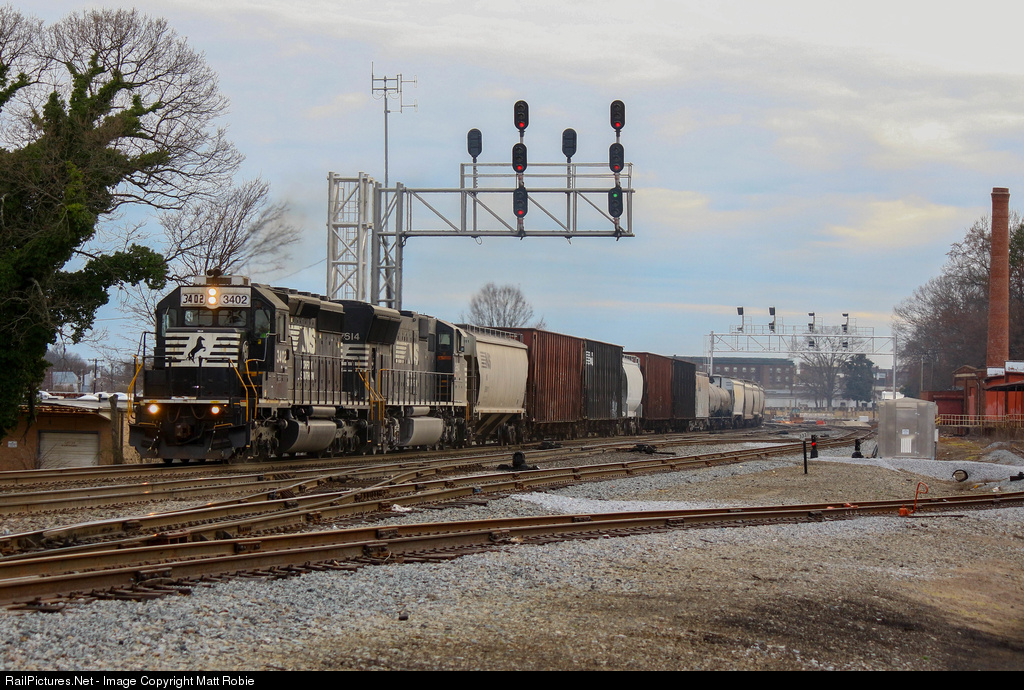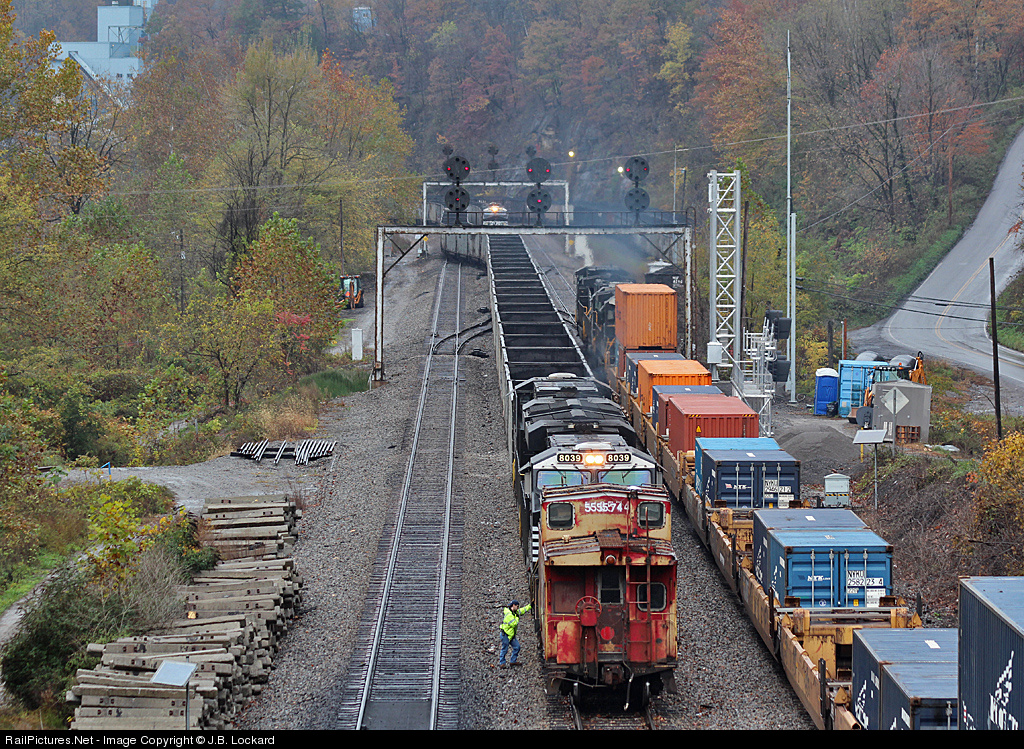Signal engineers and signal departments aren't stupid. If a signal doesn't need to display certain signal aspects then typically those lamps are omitted from the signal. With vital signaling hardware costing potentially thousands of dollars per lamp, all of that adds up and more often than not the casual viewer is presented with a watered down version of what they might see in the rulebook. Well today we will find examples across a variety of railroads of signals that don't leave anything behind in the locker room and come equipped to...show it all.
 |
| 2 x Clear at HOLMES |
We'll kick off with an easy one in the form of a PRR/Amtrak position light. With only two heads it doesn't look like it would be hard to fill up a PRR PL, but both Amtrak and the PRR do make use of an
economical lower head that omits the \ position when possible. Substituting Rule 290 Restricting for Rule 291 Stop and Proceed produces only a minimal decrease in efficiency so the \ is only included in situations where there are regular movements into unsignaled track leaving the SnP dot for movements into an occupied block.
 |
| CP-437 in South Bend, IN | |
NORAC color light signals are typically built around two head masts, but every so often the third head makes an appearance. This is either when there are slow speed routes or back to back interlockings requiring R/Y/G Medium Approach Medium.
 |
| Medium Clear at CARROLL |
Of course the more spectacular complete signal is the B&O CPL with a full central target and all six orbitals. These were especially rare due to the need to have a back to back interlocking with slow speed signals at the next interlocking down to allow for both Approach Slow and Medium Approach Slow. Due to a similar preference for Stop and Proceed over Restricting, one also tended to need routes into un-signaled track. As a result this signal went extinct in the wild
twice. The first being after LAUGHLIN JCT and CURTIS were downgraded and/or resignaled and then again when CARROLL interlocking was first upgraded in 2007, only to be resignaled in 2012.
 |
| ALDERSON crossovers. |
Sticking with the Chessie system, the C&O's example of a full signal was quite a bit more common than the B&O's. The use of R/Y/Y for Medium Approach made lower heads rather common. Add in R/Y/G for Medium Approach Slow (or Medium) and you'll get a complete 3-3-2 configuration as seen above.
 |
| CSX SATERWHITE interlocking at the Point of Rocks wye complex. |
The Seaboard system makes use of Lunar white for Restricting indications which results in the use of 4-lamp signal heads. Add slow speed indications into the max and you have 3-4-3 or 3-3-4 lamps combinations on a single mast.
 |
| 3 by 3 in Salisbury, NC. |
Moving into route signaled systems the Southern Railway most commonly saw 3 x 2 masts with no capacity for Restricting or 3-3-2 when their R/R/Y Restricting indication was required. While technically speed signaled, every so often a second, possibly slower speed, route at an interlocking would demand use of a fully equipped third head as seen above displaying Diverging (slow) Clear.
 |
| The late great HULL interlocking. |
The N&W PL system has it even easier than it's PRR cousin to force a full signal. Without the central market option for a Stop and Proceed, any need to enter an occupied or unsignaled track triggers the need for a lower head \. Standard use of Diverging Approach covers the / position as well.
Chicagoland commuter system METRA uses a "lunar only" restricting setup similar to CSX, but with route signaling full signals are very rare. Here is an interesting example at KENSINGTON interlocking on the METRA ELECTRIC.
 |
| Southern Pacific's HOWARD Interlocking |
Western roads UP and BNSF both use similar systems that have long used *R* for Restricting allowing 3 by 3 lamp heads to display all necessary indications. As usual the lowest head is most difficult to populate needing a lower speed route to trigger the R/R/G aspect that provides the only use for G on the lowest head.
However there is one signal that we've left out. This is the Y/L "Approach Restricting" typically used to signal an upcoming route into a siding on a single track main line. With no Y/*R* option, Approach Restricting requires a lunar lamp and combined with the need for a second slower speed route one would see a 3-4-3 or 3-3-4 signal, just like on METRA or CSX. These however are
incredibly rare. So rare that I do not have a photo of one in my collection (although I am sure one exists somewhere). As UP has a new policy of using Approach Restricting at places with common routes into unsignaled track, UP is the more likely road to have a full signal of this type. The best I could find was this 9-lampbeast in a 3-4-2 configuration at SWANSTON interlocking near Roseville, CA.
If you have or know of a photo of a UP 10 lamper let me know and I'll update the page :-)










BNSF did add Y/*R*, Y/*R*/dark, and Y/*R*/R to their rulebook sometime between the 2004 and 2007 editions. I'll see if I can dig up a picture of a 10-lamper though since lunar seems pretty prevalent around the NW. In the meantime, here is a picture of a 5-headed 12-lamped monster for your enjoyment, courtesy of the Portland MAX (scroll to the bottom of the post)...
ReplyDelete